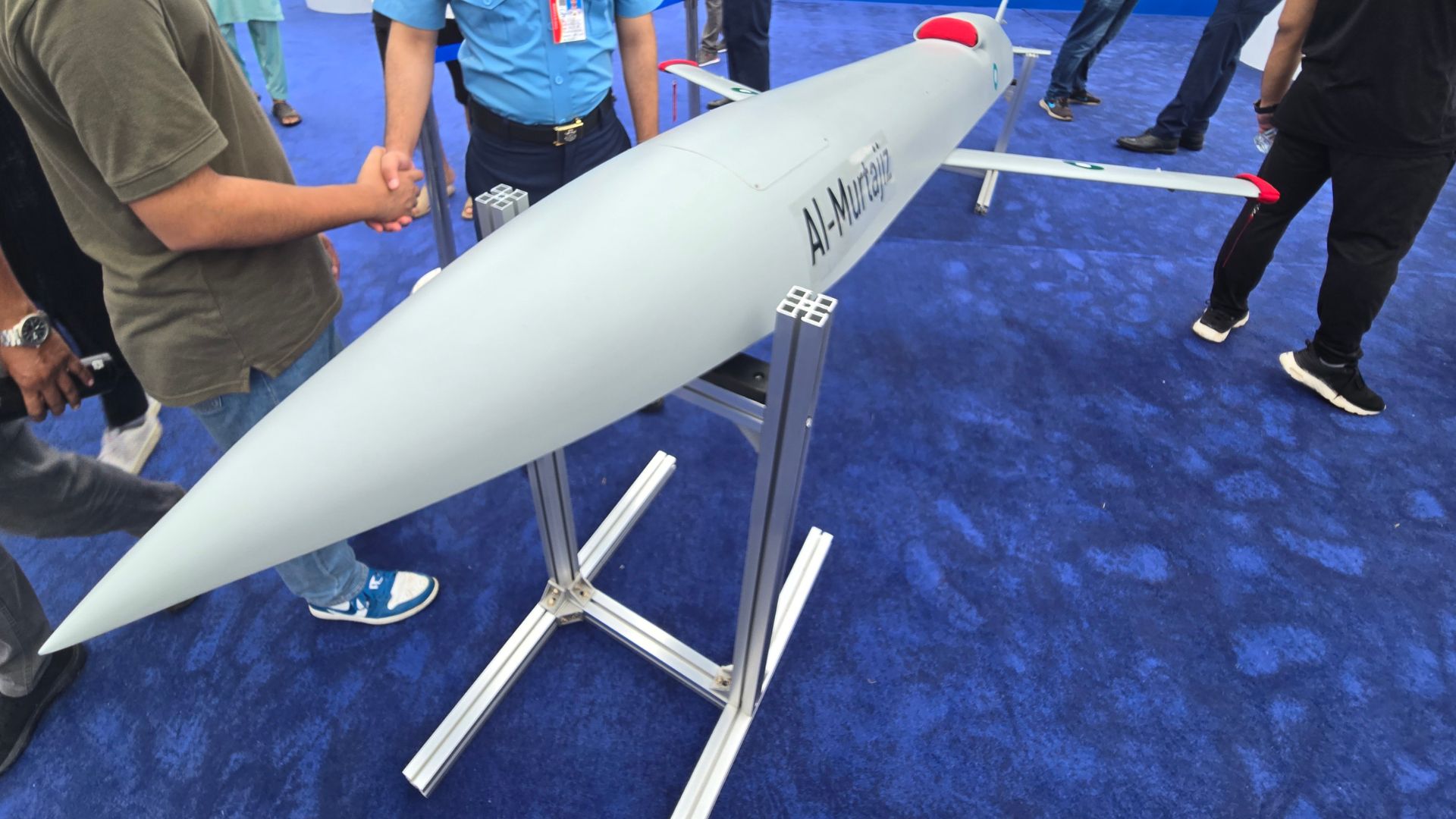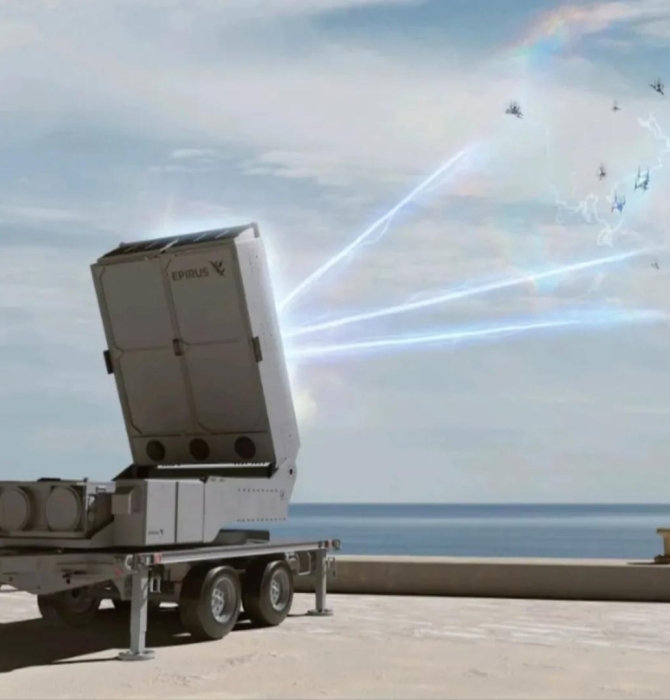14655Views

Pakistan Air Force Reveals Al-Murtajiz – A Glimpse of its Manned-Unmanned Teaming Plans Quwa Premium
As part of its showcase for the special event commemorating the 14th of August, the Pakistan Air Force (PAF) showcased what appeared to be a drone or loitering munition called the “Al-Murtajiz.”
The mock-up was not accompanied by any specifications, though PAF personnel told Quwa’s on-site correspondent that Al-Murtajiz was a ground-launched drone designed for multiple purposes, including point-interception against air-to-surface munitions – including subsonic cruise missiles – and kamikaze strike operations. Overall, the PAF personnel at the event were not at liberty to elaborate, however, and the Al-Murtajiz model was removed from the display.
One could only speculate, but a cursory examination of the display indicates that the model was basically a low-fidelity mock-up. The model showcased an air inlet, indicating that it would use a miniature turbojet engine for propulsion, flip-out narrow-chord wings, and low-observable (LO) airframe design.
In Quwa’s assessment, the Al-Murtajiz model shown at the event was likely a representation of the PAF’s broader manned-unmanned teaming (MUM-T) initiative. MUM-T is essentially a term explaining the new doctrine of executing combat operations using both manned and unmanned combat assets, leveraging or drawing out the strengths of each to maximize overall combat effectiveness. For example, under MUM-T, one could use drones to enter high-risk environments laden with dense enemy air defence systems as a way to absorb losses (from enemy surface-to-air missile fire) before crewed fighters reach the vicinity (or entirely negate the need of sending those fighters deep into enemy territory at all).
The PAF both officially and unofficially confirmed that it was working towards building a MUM-T capability, and this was to be expected seeing it is the general trend of all other major air arms.
In an analysis from March 2025 on the PAF’s MUM-T work, Quwa stated:
Several factors will drive the PAF to expand its UAS fleet into jet-powered UCAVs of various size and capability classes.
First, there is – or soon will be – an actual requirement. “Second to None,” a semi-official publication of the PAF, stated that the PAF’s future UAS vision involves using drones for air-to-air operations, manned-unmanned teaming (MUM-T), and “stealth operations.” The latter will involve drones, including high-altitude long-endurance (HALE) “stealth UAS with strike capabilities.”
Second, it is the most economical way to expand air power, especially in terms of offensive warfighting capability. It is not feasible to entirely rely on crewed next-generation fighter aircraft (NGFA). In fact, the emerging trend across other major air forces is to use crewed NGFAs as a focal node that would manage UCAVs in integrated air operations. This is the same model that the PAF’s primary vendor, i.e., China, is building towards; it is unlikely that the PAF will deviate from this core methodology.
Regarding the Al-Murtajiz; while it is unclear if this specific design will materialize, its presence at the event confirms that the PAF is now actively seeking a multipurpose drone capable of decoy, loitering munitions, and special mission – e.g., electronic countermeasures (ECM) – operations.
Looking closely, one will notice that the PAF is nurturing the key ingredients of a MUM-T capability in clear, sequential fashion: small ‘smart munitions’, loitering munitions, and, now, apparently a decoy drone. In an earlier analysis, Quwa stated that a decoy drone was likely on the development roadmap, and, crucially, it would be the next natural step from the work the PAF had already done up to this point.
The PAF’s entry into next-generation MUM-T could involve the acquisition – or, potentially, the development – of jet-powered attritable decoy drones. Following loitering munitions, decoy drones would likely be the lightest and lowest cost pieces of a future MUM-T deployment.
Interestingly, there appears to be a sequential order to how MUM-T is being developed in other parts of the world, including the West. It starts with a ‘smart munitions’ stack that leans on small lightweight cruise missiles and/or glide bombs.
End of excerpt. You’ll need to login or subscribe to Quwa Premium to access the full article.
Existing Quwa Plus/Pro members can log in below
Note: Logged in members may need to refresh the article page to see the article.


